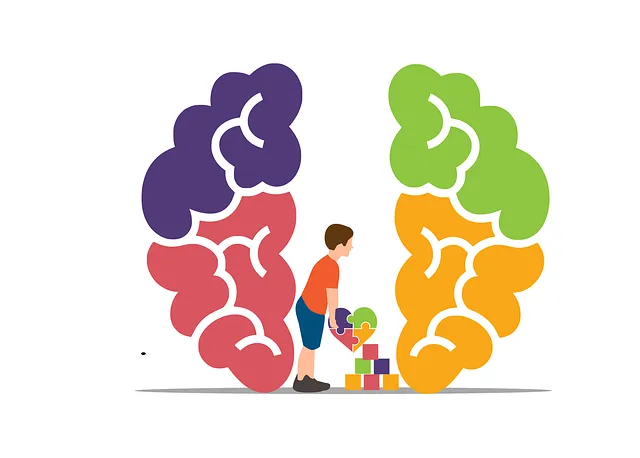Burnout among healthcare providers at the Kaiser Permanente Mental Health Access Center in Greenwood Village is a significant concern due to prolonged stress, lack of control, and poor work-life balance. To combat this, the organization employs strategies like offering tailored counseling, promoting self-care practices, trauma support services, empathy building, mind over matter principles, and emotional well-being promotion techniques. These initiatives prioritize staff welfare, foster a supportive culture, and empower healthcare professionals to thrive without burnout, ensuring quality patient care.
Healthcare provider burnout is a growing concern, impacting not just individuals but the entire healthcare system. This article explores strategies to combat this issue, focusing on Kaiser Permanente’s approach at its Greenwood Village location. We delve into understanding burnout among healthcare providers and highlight the significance of mental health support through dedicated access centers. Additionally, we discuss sustainable work environment creation for long-term well-being, drawing insights from Kaiser Permanente’s successful initiatives.
- Understanding Burnout Among Healthcare Providers
- The Role of Mental Health Support and Access Centers
- Strategies for Preventing Burnout at Kaiser Permanente Greenwood Village
- Creating a Sustaining Work Environment for Long-Term Well-being
Understanding Burnout Among Healthcare Providers

Burnout among healthcare providers is a growing concern, impacting not only individual well-being but also patient care and organizational productivity. It’s a state characterized by emotional exhaustion, depersonalization, and reduced personal accomplishment—a trio of symptoms that erode passion for work and contribute to a sense of being overwhelmed. Healthcare professionals, especially those in demanding settings like the Kaiser Permanente Mental Health Access Center in Greenwood Village, are at heightened risk due to constant exposure to high-stress situations, heavy workloads, and complex patient needs.
Understanding burnout involves recognizing its underlying causes, which often stem from a combination of factors: prolonged exposure to stress, lack of control over work conditions, inadequate social support, and poor work-life balance. The impact can be severe, leading to decreased job satisfaction, increased absenteeism, and potential risks to patient safety. To address this, healthcare organizations must promote strategies that foster emotional regulation, enhance self-esteem improvement, and instill mind over matter principles among their staff.
The Role of Mental Health Support and Access Centers

Healthcare providers, like anyone else, are not immune to stress and mental health challenges. That’s where mental health support plays a pivotal role in burnout prevention strategies. Organizations such as Kaiser Permanente have established Mental Health Access Centers, like the one in Greenwood Village, to offer comprehensive services tailored for healthcare professionals. These centers serve as safe havens where providers can access counseling, therapy, and stress management programs designed to help them cope with workplace pressures and personal struggles.
By prioritizing mental well-being, these access centers contribute to self-esteem improvement and overall resilience. They facilitate open discussions about the unique challenges faced by healthcare workers, fostering a culture of support and understanding. In light of high burnout rates among professionals in this field, leveraging resources like Kaiser Permanente’s Mental Health Access Center is crucial for maintaining a healthy, dedicated workforce.
Strategies for Preventing Burnout at Kaiser Permanente Greenwood Village

At Kaiser Permanente Greenwood Village, strategies for preventing burnout among healthcare providers are multifaceted and holistic. The organization prioritizes Kaiser Permanente mental health access center Greenwood Village as a cornerstone in supporting staff well-being. This includes dedicated spaces for relaxation and reflection, regular self-care practices encouraged by the administration, and organized stress management workshops. Healthcare professionals are also connected to trauma support services, recognizing that addressing psychological safety is paramount. Through these initiatives, Kaiser Permanente Greenwood Village fosters an environment where providers feel valued, supported, and empowered to deliver quality care without succumbing to burnout.
Creating a Sustaining Work Environment for Long-Term Well-being

Creating a sustainable work environment is paramount for healthcare providers’ long-term well-being, particularly in demanding settings like the Kaiser Permanente Mental Health Access Center in Greenwood Village. Beyond basic resources and support systems, fostering an empathetic culture can significantly mitigate burnout. Implementing Empathy Building Strategies that encourage open communication, active listening, and emotional intelligence create a supportive network among colleagues. These strategies not only enhance patient care but also contribute to collective resilience against stress.
Integrating Mind Over Matter Principles into the daily routine can further promote emotional well-being. Mindfulness practices, stress management techniques, and positive reinforcement programs empower healthcare providers to navigate challenging situations with greater equanimity. By prioritizing Emotional Well-being Promotion Techniques, such as regular check-ins, flexible work arrangements, and access to resources like counseling services (e.g., at the Kaiser Permanente Mental Health Access Center), organizations can ensure that staff members feel valued, supported, and equipped to thrive in their roles.
Healthcare provider burnout is a significant concern, but by implementing strategic initiatives, organizations like Kaiser Permanente can foster a supportive work environment. The mental health support and access centers play a crucial role in addressing burnout at facilities such as Kaiser Permanente Greenwood Village. By prioritizing employee well-being through comprehensive strategies, healthcare providers can enhance job satisfaction and prevent burnout, ensuring a sustainable and thriving workforce for the long term.






